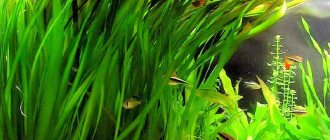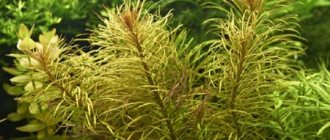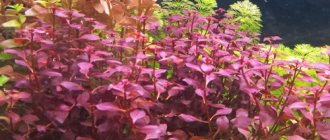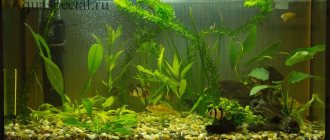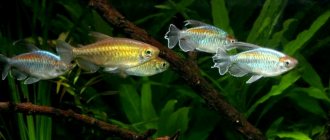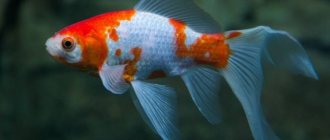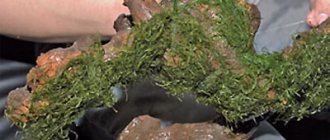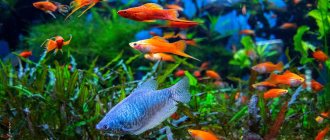Description and characteristics
Riccia, or water moss, is a plant belonging to the class Liver mosses. In the wild, Riccia grows everywhere, covering new bodies of water with the help of birds that carry pieces of plants on their legs. However, Riccia is an unusual representative of the flora, differing from other species in the absence of roots and leaves. Instead of these parts, moss has many miniature stems and plates of a rich green hue.
Aquarists value water moss not only for its attractive appearance, but also for its rapid growth. In a favorable environment, Riccia in an aquarium grows in a short time, forming a lush carpet of a pleasant shade, with which you can decorate an artificial pond in an original way. The advantages of the plant also include its unpretentiousness - maintaining green islands requires practically no effort from the owner of the tank.
Another important detail of the description is that the plant floats in the water column if it is not fixed to the bottom. This property is due to the fact that numerous stalks of moss are filled with oxygen, due to which the growing Riccia in an aquarium is able to float in the water. This quality gives room for the imagination of aquarists who use floating moss to decorate tanks.
Reproduction
The aquarium plant reproduces vegetatively. Riccia is propagated by separating a part from a moss ball and transferring it to a separate container with settled water, in which all the necessary conditions are created. The formation of a new moss ball occurs in 2-3 weeks, and after that it is placed in a container with fish. Riccia is often brought into the aquarium by accident with fish and other plants. These are small particles of moss, and the owner becomes aware of its presence in the aquarium only when it begins to actively develop. Whether or not to introduce Riccia into a pond is up to the aquarist, but if you plan to breed fish, it will be of help.
Look what riccia looks like
AdminAuthor of the article
Did you like the article?
Share with your friends:
Varieties
Scientists have classified about 60 varieties of Riccia around the world. It is difficult to distinguish a representative of one species from another, since the appearance and density of green moss is affected by the habitat: the same species grown in different areas can have strong differences.
Two varieties are popular in aquarium keeping:
- Riccia floating - the species is represented by moss of a delicate light green shade, with small branches. The distance between the branches of the plant is no more than 1 cm, and thanks to the oxygen that fills the stems, Riccia floating as it grows covers the surface of the reservoir with a lush carpet.
- Riccia amano - differs from the previous variety in that it does not float up. Amano riccia grows under water and has long dark green branches.
Description of Riccia varieties
The aquarium plant is a liver moss and has no roots or trunk. This moss consists of plates and stems that are intertwined. The stalks are 1 mm thick, among them the fry usually hide from predatory fish. The interior of the Riccia island is filled with air bubbles; in the light they look like small pearls.
The color of Riccia depends on its condition and on how well the contents are organized. A faded green color indicates proper lighting; dark and brownish shades indicate a lack of light. When whole, Riccia looks like a carpet on the bottom or surface.
Attention! Riccia is distributed throughout all corners of the planet; there are more than 60 species of this algae. Despite the abundance of species, they may be completely different in appearance, depending on the growing conditions.
All types of riccia can be divided into two groups - regular and amano:
- Riccia amano or sinking is distinguished by elongated stems and plates, it is darker. There are about 20 species of sinking mosses; most often amano mosses are grown in aquariums. In the tropics, this variety grows in standing water. Planting Riccia amano is possible in aquariums of different sizes. Optimal conditions are fresh water and a temperature of 22-25 degrees. If the temperature drops by one degree, the algae may not survive. This fact should be a reason to buy a thermometer and a heater for your aquarium.
In good conditions, sinking riccia can grow over the entire surface of the aquarium. Such rapid growth can impair the supply of oxygen to the water, so the moss is regularly thinned. This procedure is needed 2-3 times during the summer.
Important! Riccia amano can be combined with other algae that also require good lighting.
- Riccia floating or regular looks more airy. This algae is planted during the appearance of the fry. Ciliates appear in it in large numbers; they are the main diet of young fish. Due to the fact that Riccia, floating on the surface, blocks the flow of light, it is necessary to place algae from shade-loving varieties on the bottom. Regular Riccia can also be placed at the bottom of the aquarium. You can secure it to a stone or driftwood using wire or mesh material. This must be done carefully, the plant is very delicate. In this form, Riccia looks beautiful and does not interfere with the inhabitants of the aquarium; it is low-growing and does not take up much space.
Floating Riccia successfully takes root in tropical aquariums; it easily adapts to warm water. In the summer, when the temperature rises, like other algae, the common algae needs to be thinned out. During the winter months it does not grow as intensively.
Functions of Riccia in the aquarium
Despite its uncontrolled growth, keeping water moss has many advantages. Aquarists often argue about whether Riccia in the aquarium is beneficial or harmful, and completely in vain. Of the plant's shortcomings, only one can be noted - rapid growth, but with proper care no problems should arise with a lush green carpet. But there are many benefits from Riccia in an artificial reservoir:
- Saturates the aquatic environment with oxygen.
- Actively processes organic residues excreted by the inhabitants of the aquarium.
- Improves mineral metabolism.
- Serves as a shelter and place for laying eggs of certain phenotypes.
- Shades areas in the tank, creating a refuge for shade-loving species.
In addition, the Riccia plant is a tasty morsel for many residents of water bodies, especially turtles and ampularia who are not averse to snacking on the moss. And of course, what gives the plant a special value in the eyes of aquarists is the ability to beautifully decorate the aquarium space with green mosses.
Possible content problems
Riccia is a very unpretentious aquarium plant, practically not susceptible to diseases and pests.
Difficulties in development most often arise due to violation of the conditions of detention:
- Water that is too hard or cold will slow down growth.
- Lack of lighting causes the plantation to disintegrate into separate pieces, which leads to loss of decorative qualities.
- If the water in the aquarium is not renewed for too long, a whitish coating forms on the leaf blades.
Usually, normalizing the parameters of the aquatic environment helps the plant cope with problems on its own.
Conditions of detention
The Riccia plant kept in the aquarium is famous for its ability to grow even in harsh conditions. But in order for the moss to be beneficial and delight you with a pleasant shade of fresh greenery, you must adhere to the content recommendations:
- Aquatic environment - for growth, the temperature should be maintained in the range of 22-28C, acidity - 5-7 pH, hardness - 7-8 dH. When the number of degrees drops, the greenery will slow down its development; if it gets very cold, it will die. The water is renewed once every two weeks, replacing 1/5 of the volume.
- Lighting – the plant loves intense light, so the tank is equipped with daylight bulbs with a power of 2 W/dm². With a lack of light, the greens begin to rot and disintegrate.
- Feeding - no need for floating variety. But for amano, fertilizing is desirable along with the supply of carbon dioxide.
To understand how Riccia feels in an aquarium, you need to look at the color and growth rate of the grass. When feeling well, the green resident has an even and rich emerald hue. If the moss changes color to dark red or brown, then this is an alarming signal for the aquarist.
Suitable conditions for Riccia
When using Riccia to decorate an aquarium, it needs certain conditions:
- it is important to reduce water hardness;
- the water in the aquarium should be slightly alkaline with a pH of 7.2;
- temperature – 22-29 degrees Celsius.
Despite its unpretentiousness, the Riccia aquarium plant suffers from temperature changes and hard water. If the water becomes colder than 21o C, the algae stops growing, it darkens and disintegrates when it dies. The same result occurs with increasing rigidity.
Attention! If necessary, you can increase the growth rate of Riccia. It is enough to cover the aquarium with glass; favorable growth conditions are created in the moist oxygen layer.
To create artificial lighting for an aquarium, it is better to use fluorescent lamps. Regular light bulbs can heat the surface of the water.
Riccia does not need feeding; it is enough to care for the aquarium according to a schedule that is built depending on the inhabitants.
Conditions of detention
The content of riccia is quite simple. It thrives in both moderately warm and tropical aquariums. For good growth, soft water with neutral or slightly alkaline acidity is desirable. If the water hardness in the aquarium exceeds 8°, then the growth of Riccia slows down. The optimal temperature is 22-26 °C. If the temperature drops below 20 °C, growth also slows down, the plant decreases in size and may even die. It is recommended to change the water weekly up to 20% of the aquarium volume .
Riccia loves bright aquarium lighting; if there is a lack of it, it breaks up into separate pieces (without forming islands), and the lower layers can even rot. In summer, the plant grows very strongly and prevents light and oxygen from entering the aquarium. Therefore, the thickets of Riccia need to be thinned out. no special feeding is needed. The plant receives enough nutrients from fresh water and fish food.
Riccia is unpretentious to water temperatures and can withstand different ranges, but it requires constant change of water in the aquarium, because very sensitive to cleanliness. In dirty, muddy water, the plant begins to deteriorate and wither. In summer, in bright sunlight, it grows quickly, filling almost the entire surface of the water, so sometimes it is recommended to thin it out, removing excess parts of the plant.
In winter, Riccia requires additional intense lighting, i.e. she lacks natural sunlight. The optimal temperature difference for it is 22-26 degrees, and at temperatures below 20 degrees it can die. It feels comfortable in soft water with a neutral reaction, but when the water hardness is more than 8 degrees, it can grow and develop much more slowly.
Riccia uses fish waste products dissolved in water, so there is no need to additionally feed the aquarium plant. If you do not change the water in the aquarium for a long time, the process of photosynthesis and nutrient processing may be disrupted . Riccia does not tolerate table salt , so if it is necessary to treat the fish, then it should be temporarily separated from the aquarium animals and this should be done in different aquariums.
Care
Caring for water moss is extremely simple: the plant, due to its rapid development, requires constant pruning. To ensure that the tank looks well-groomed and oxygen and light penetrate deep into the water column, the lush green carpet is trimmed once every two weeks, removing excess bushes.
Speaking about care, it is important to note a feature: water moss does not like table salt, so it is not advisable to use this product to treat fish.
Use in an aquarium: benefit or harm
In an aquarium, Riccia moss performs many useful functions:
- saturates water with oxygen;
- creates dark and cozy places for shy fish and fry;
- participates in the exchange of mineral and organic substances;
- acts as a protective substrate for fish spawning, especially useful for labyrinthine fish, which build a nest of oxygen bubbles and pieces of moss for future offspring in the aquarium;
- is a healthy and nutritious food for turtles, ampullaria and some crustaceans;
- promotes the rapid maturation and reproduction of ciliates - simple organisms that act as starter food for fry;
- complements the diet of underwater pets.
Important! It is not recommended to place Riccia in a tank with goldfish - they are extremely voracious and can eat all the moss in a very short time.
In addition to the positive qualities, several minor disadvantages of this plant should be highlighted:
- inability to tolerate even slightly salted water;
- rapid growth clogs the aquarium ecosystem.
The second point will not become a serious problem for an aquarist who takes care of Riccia in a timely manner, fulfilling all the conditions for its maintenance.
Design and reproduction
Moss propagation is carried out vegetatively or by dividing the thallus, without requiring additional actions on the part of the aquarium owner. Even a miniature piece can grow into an impressive carpet of lush greenery.
Due to its rapid growth and ability to swim, the plant is often used to create picturesque aquatic designs. The design of the aquarium is possible in two options:
- On the surface - if the plant is not fixed to the bottom, the moss will float to the surface of the water surface. You can leave everything as is, allowing the greenery to cover the surface with a lush carpet, or limit the area by enclosing the greenery in rings. This creates green islands that add flair to the tank.
- Underwater - To grow a plant on the bottom, you need to know how to secure unruly moss underneath, or use a sinking variety. To fix the floating species, a thin mesh or wire is used, and you need to act carefully so as not to damage the delicate stems.
Riccia aquarium plants are a godsend for beginning aquarists, given their unpretentiousness and the benefits that moss brings to underwater inhabitants. With the help of a plant, you can transform an artificial reservoir, creating an imitation of wild forest lakes, provide a cozy shelter for small fish and food for fry.
How to plant Riccia?
If the aquarist has a lot of riccia at his disposal, then he can significantly transform the aquarium literally from the means at hand. For example, you can plant moss in the following way:
Carpet
For this, a special aquarium net or fishing line is used. The branches of the plant are pulled into the cells, and the entire mat is laid on the bottom. Decorative stones can be placed in the corners for reliability;
On a stone, coconut or driftwood.
Riccia can be planted in a net by securing a weight inside
All these decorations should be processed in advance (for example, driftwood branches should be boiled in a saline solution). If they are ready, then you can impose riccia on them. To do this, you can use the same fishing line (just be careful not to cut the branches) or wires (the kind used to wrap, for example, headphones or USB cables).
floating island
A fairly simple living structure made from mosses. The existing balls are tied together using thread or fishing line;
Description
This plant is an extremely common variety of liver moss that can grow equally well on land and under water. Riccia can be found in almost every corner of the Earth. This plant has a completely different structure than most aquarium plants. It has no stems, leaves, flowers, or even roots - there is only a so-called thallus - something like a small twig that spreads along the surface of the substrate, grows due to cell division and branches, intertwining with another thallus. This creates a dense “tangle” of Riccia, which gives the impression of a uniform bush. If you pick up such a formation, it will most likely crumble, but in water this is usually not a problem.
Riccia floating is a beautiful plant that can be used to decorate the bottom of an aquarium, create artificial shading, or feed fish.
Content
- 1 Description
- 2 Terms
- 3 Features
- 4 Ground
- 5 Recommendations
- 6 Reproduction
Source: www.plantedtank.net
Source: www.shrimpnow.com
Source: www.aquaticquotient.com
- Other names: Riccia fluitans.
- Origin: 5-10 cm.
- Size: 5-10 cm.
- Temperature: 15-30 °C.
- Water parameters: pH 6-8, dKH 1-8 °.
- Lighting: 0.4-0.6 W/l.
- Growth rate: high.
- Content difficulty: low.
Description of the plant
Riccia belongs to the Liver moss family. It has no roots, stems or leaves. The algae consists of small green stems and plates intertwined with each other. Inside the branches there are cavities filled with air, which lift them to the surface of the water. There are plates on the stems. On the inside they are covered with a thin cuticle impregnated with a protective waxy substance. The root system is rhizoids - thread-like outgrowths, thanks to which the algae receives nutrients and substances and attaches to surfaces.
As the plant grows, it forms a dense carpet on the surface of the reservoir, called thallus. Over time, its thickness can reach several centimeters.
Under favorable conditions, the algae has a bright green color. During the period of wilting or lack of nutrients, it turns dark green or reddish brown.
Also, a change in color occurs during the maturation of spores, which can persist not only in a humid environment, but also during periods of drought, when adult plants die. In the rainy season, when reservoirs are filled with water, Riccia forms a young green mass.
Reproduction and planting
To populate the aquarium, it is enough to let a branch float in water with a temperature not lower than + 15 ° C without breaking or showing signs of wilting. Within a few weeks, the surface of the aquarium will be decorated with mossy floating hummocks.
Riccia rooted at the bottom looks very decorative. Takashi Amano developed a technology for fixing riccia on a bottom stone. He laid a piece of thallus on a piece of lava and secured it with a strong thin nylon mesh, which he cut off as it grew.
The technology of growing Riccia using a net on stones and driftwood quickly spread among aquarists, but since then it has changed somewhat and looks something like this:
- Riccia is fixed to the surface with a thin mesh.
The base for the future flower bed is cut out of nylon mesh (preferably transparent).
- In bright direct light, a thin layer of the prepared plant mass is laid out on the base so that the mesh is visible. You need to know that if a layer is too thick, the lower tier of the thallus will not have enough light and it will die.
- The laid out riccia is carefully fixed on all sides with fishing line or cotton thread.
- The resulting structure is placed on the desired object (stone, driftwood, top of the grotto), given the desired shape, secured and tied to the net with a small weight.
- Soon the riccia will grow and completely hide the mesh underneath.
Riccia - aquarium decoration: varieties and recommendations
Description
Riccia belongs to the class of liver mosses (Marchantiopsida). The peculiarity of the plant is the absence of stems, flowers and root systems. Bryophyte (moss) consists of branching and intertwined twigs and plates about 1 mm thick, forming a dense, lush carpet on the water surface. The root system is replaced by rhizoids - thread-like growths. With their help, the plant receives nutrients and can attach to various surfaces.
The usual color of Riccia is light green. Red-brown, brown tones can mean plant disease, nutritional deficiency, lighting, as well as the presence of harmful chemical compounds in the aquarium. The color changes to darker when spores form and wilt.
Varieties
About 200 species of plants are known. It is distributed in temperate latitudes, tropical and subtropical waters. The first detailed description of Riccia can be found in the works of the Swedish botanist Carl Linnaeus, and from the 18th century. This bryophyte began to be grown as an ornamental plant. Today, approximately 60 species can be found in home ponds. They have only minor differences, and their appearance largely depends on the conditions of detention.
In aquarium keeping, two varieties are most often used:
Riccia floating
This is a light green plant. Its stems are filled with oxygen, due to which the picturesque carpet floats on the surface of the water. If desired, islands of moss can be fixed to the bottom.
Riccia amano
It is located under water, the branches are thicker, longer, and the color is rich green.
Impact on the aquarium ecosystem
The plant is characterized by rapid growth, so some aquarists refuse to breed it, believing that the dense mass will clog the water. However, this can only happen if there is insufficient care. But the beneficial effect is obvious.
Useful properties of Riccia:
saturates water with oxygen and organic compounds, improves its biochemical parameters;- partially processes the waste products of the aquarium inhabitants;
- is food for fish, turtles and shrimp;
- used as a spawning site and shelter for fry and mollusks;
- serves as material for the nest of labyrinth fish;
- darkens the aquarium, creating a favorable environment for shade-loving fish species;
- used to create beautiful aquarium decorations.
The plant should not be allowed to grow excessively, otherwise the thickets will interfere with the penetration of light into the water column. This leads to slower growth of other plants in the aquarium and the formation of excess carbon dioxide.
Aquarium size and water parameters
- The plant feels good at a water temperature of 20-28 °C, but is most comfortable at 22-26 °C. If the temperature drops below 20°C, the bryophyte will slow down and die in severe cold weather.
- Every few weeks it is necessary to change the water in the amount of 20% of the volume of water in the aquarium. If you do not do this procedure, a white coating will form on the riccia, which prevents the release of oxygen.
- Riccia does not like table salt too much, so if this substance is used to treat fish, it is better to temporarily place the moss in another container. The same should be done if you need to add medications to the water.
- To breed Riccia, you need a tank with a volume of at least 10 liters. Neutral or soft water with an acidity of 5-7 pH is preferable.
Lighting
Riccia requires a lot of light. With its deficiency, growth slows down and the process of rotting begins. It is advisable to use fluorescent lamps, placing them at a distance of at least 10-15 cm from above. Conventional incandescent lamps can excessively heat the water surface and dry out the moss. The total lighting time of the aquarium should not exceed 12 hours, otherwise rapid growth of algae will occur.
General care
Regular weeding and removal of rotten and fallen branches are necessary. Otherwise, Riccia will pollute the ecosystem. To clean the thallus of debris, you need to remove the plant and rinse it under running water. It is advisable to trim the tussocks from floating riccia every week; the height of the stems should not exceed 3 cm. If you have certain skills, with the help of cutting you can give riccia amano the most bizarre and original shapes.
Top dressing
No feeding is required, since Riccia extracts the necessary minerals and organic compounds from water and fish waste products. If the plant is located at the bottom, a supply of carbon dioxide is desirable for better growth and development. The recommended carbon dioxide content is 15-20 mg/l.
Reproduction and planting
Growing Riccia is extremely simple. You need to take a piece of moss without signs of wilting and place it in an aquarium with the appropriate conditions created. After a couple of weeks, bright green islands will already be floating.- To create a beautiful design on the surface of the water, you can plant a single carpet or limit yourself to several fragments. To regulate the size of plantings, it is recommended to use special silicone rings. Plants are placed inside.
- For a variety of landscapes at the bottom of the aquarium, you need to tie the plant to a base (driftwood, stones, clay shards, plastic tubes, coconut shells, etc.) using a strong thread, wire or fishing line. The base material should not oxidize or rust in water. You can put the moss in a nylon stocking and stretch it over a stone. The plant will soon sprout and cover the entire surface.
- If you want to see a dense green carpet at the bottom of the aquarium, you need to use a plastic or nylon mesh for the base and secure it with soil or pebbles. A vertical mat will be created if one or several threads or pieces of fishing line are lowered at one end into the water and secured with a weight, and pieces of moss are attached to the base itself.
Neighborhood with other aquarium plants
Riccia gets along well with many green neighbors; it is only necessary that their conditions generally coincide with those required for liver moss.
Options for successful combinations:
- with other varieties of mosses and ferns;
- with echinodorus;
- with glossostigma, eleocharis and other ground covers.
Riccia and duckweed should not be planted together, as both plants will create shade and suppress each other.
Riccia is an ideal plant for beginners and experienced aquarists. It does not require special efforts to grow and care, while allowing you to create unique and unusual landscapes.


